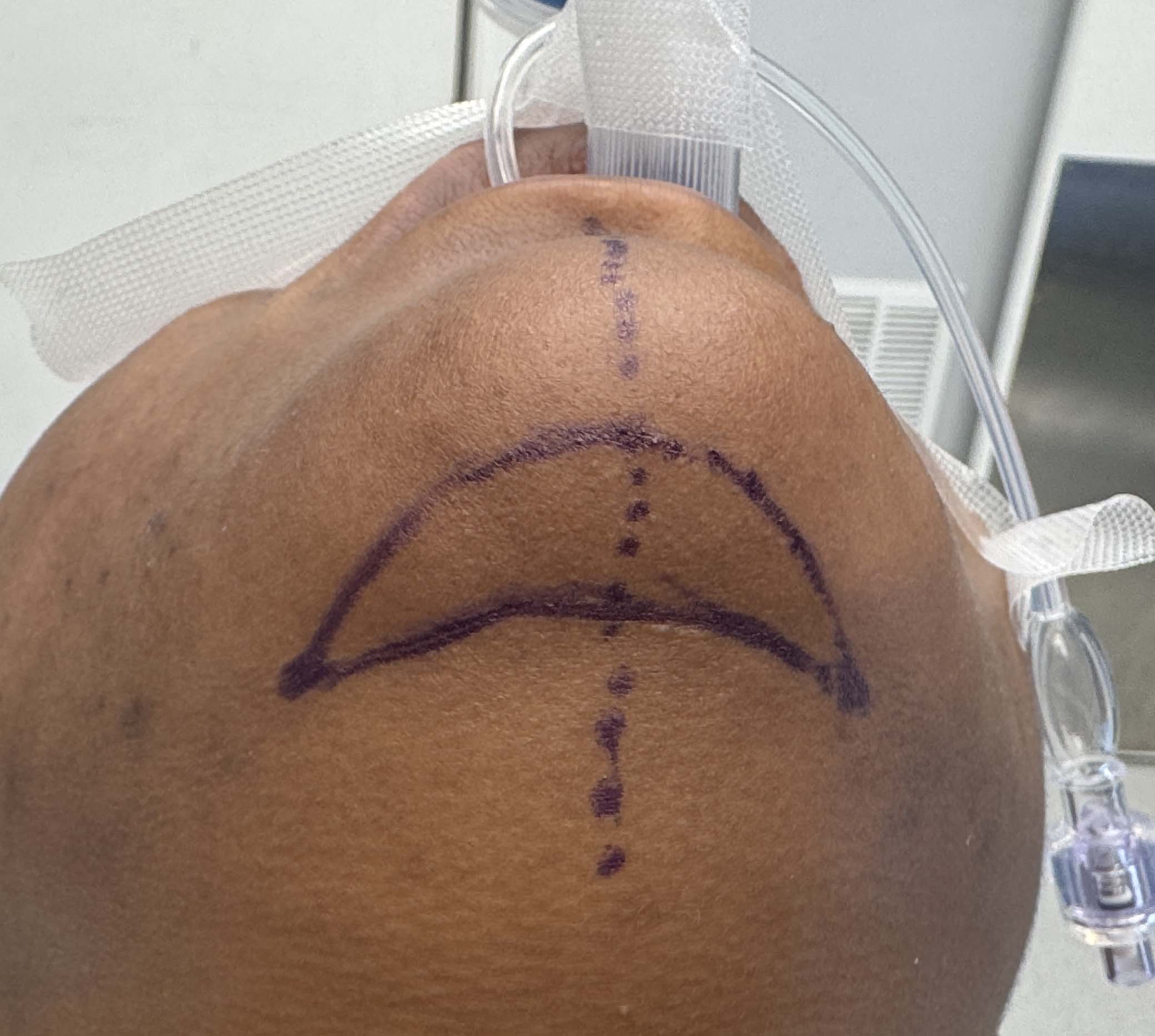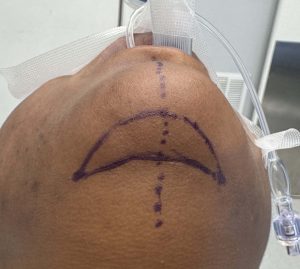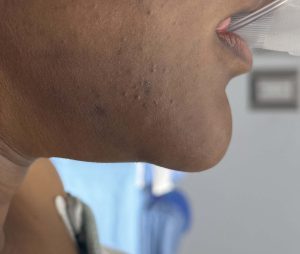Introduction
A submental chin reduction (or submental contouring) is a surgical procedure designed to reshape the chin by reducing excessive projection or fullness beneath it — often referred to as a “double chin.” This should be differentiated from a submentoplasty or platysmaplasty, which targets the neck rather than the chin. Those procedures focus on removing subplatysmal fat and tightening neck muscles, rather than altering chin contours.
Submental chin reductions may involve removal of bone or soft tissue, depending on the underlying cause of the deformity. This concept encompasses several variations, each tailored to address either bony or soft-tissue excess.
Submental Chin Reduction vs. Chin Osteoplasty
|
Feature |
Submental Chin Reduction |
Chin Osteoplasty (Bone Reduction/Reshaping) |
|---|---|---|
|
Target Tissue |
Fat and sometimes loose skin under the chin (submental area) |
The chin bone itself (mandibular symphysis) |
|
Goal |
Improve the neck–chin angle and reduce fullness or a “double chin.” |
Reduce projection, width, or height of the bony chin for facial balance. |
|
Approach |
Liposuction or direct fat excision via a small submental incision. |
Intraoral incision (inside the mouth) or submental incision to access bone. |
|
Ideal Candidate |
Has excess submental fat with good skin tone and normal bone anatomy. |
Has a large, long, or asymmetric chin (bony prominence) rather than just soft-tissue fullness. |
|
Recovery |
Quick (3–7 days) with mild swelling and bruising. |
Moderate (7–14 days) with more swelling and temporary numbness or stiffness. |
|
Longevity |
Permanent fat removal; results depend on skin quality. |
Permanent skeletal change; highly predictable contour improvement. |
|
Anesthesia |
Usually local with sedation or light general anesthesia. |
Always requires general anesthesia. |
The Chin Pad: An Anatomical Variant
A more specific form of chin contouring is the submental chin pad reduction, which targets a distinct soft-tissue structure—the chin pad (also known as the mental pad). This structure is separate from both the submental fat and the chin bone.
The chin pad consists of:
-
Subcutaneous fat
-
Fibrous septa
-
The lower portion of the mentalis muscle
-
Overlying skin
This layer provides the chin’s soft contour and projection. In some individuals, the chin pad becomes excessively thick or ptotic (droopy), creating an overly heavy or prominent chin — even when bone and deeper fat layers are normal.
Indications for chin pad reduction include:
-
Bulky soft tissue over a normal-sized chin bone
-
Persistent chin fullness after liposuction or bony reduction
-
Mental pad droop or separation after prior surgery (mental pad ptosis)
-
Excessive volume following fat or filler injections intended for augmentation
Case Study
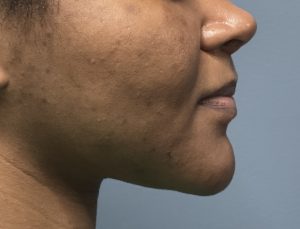
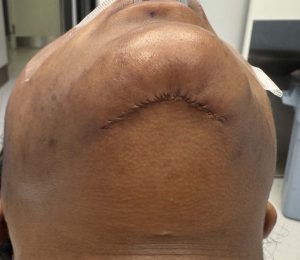
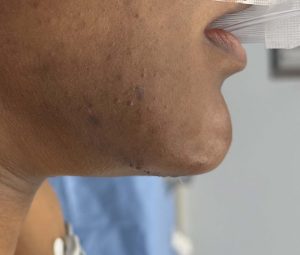
Discussion
A submental chin pad reduction is a targeted soft-tissue contouring procedure that refines the chin by removing or repositioning excess tissue. Iatrogenic (procedure-related) chin pad hypertrophy can result from:
-
Chin implant removals
-
Bony chin reductions performed intraorally
-
Reversal of sliding genioplasties
-
Overuse of fat or filler injections
While fat is easily introduced into the chin, it is difficult to remove. Liposuction, in particular, is a poor reduction method for chin pad excess because it creates irregularities without meaningfully reducing bulk.
The submental chin pad resection technique removes most of the soft tissue centrally, following a crescentic excision pattern. This effectively reduces both chin projection and length, though it also tends to widen the chin slightly rather than maintain a sharp V-shape.
Key Points
-
Fat injections can cause an overly fleshy, projected chin.
-
A full-thickness chin pad excision via a submental approach is required for definitive correction.
-
This soft-tissue excision technique effectively shortens and deprojects the chin, improving contour and proportion.
Barry Eppley, MD, DMD
World-Renowned Plastic Surgeon

